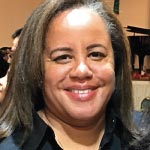By Mike Hebel
POA Welfare Officer
BASIC COLA APPROVED FOR 2011-2012
Q. Mike, in a recent issue of the POA Journal you wrote that the Retirement Board would determine, at its March meeting, if a basic 2% cola would be paid for fiscal year 2011-2012. What happened?
A. Good news! At its meeting of March 8, 2011 the Retirement board approved a 2% cola (remember it’s now of the compounding type) for all miscellaneous retirees and Tier II public safety retirees. It is payable effective July 1, 2011 for all qualified retirees who retired prior to July 2, 2011. The San Francisco/Oakland/San Jose CPI-U for the preceding calendar year (measured December to December) had a 1.52% increase which is rounded up to the nearest one percent.
What about a supplemental cola for 2011-2012? That’s a more interesting question. The Retirement Board usually takes up the question of a supplemental cola at its December meeting when its actuary has all the numbers in for the preceding fiscal year. Remember the Retirement trust fund must have excess earnings in order to pay the supplemental cola; excess earning are those over and above the Board’s assumed rate of return of 7.75%. Here’s the really good news: as of February 28, 2011 the trust fund was up 21.78% at $15,211, 470,000. If it keeps up this good performance for the next 4 months, there will indeed be more than sufficient monies to pay a full (1.5%, compounded) supplemental cola effective to July 1, 2011 payable in the February 2012 retirement check with 7 months of retroactive supplemental cola included. This would make for a 3.5% compounded cola for FY 2011-2012 for all retirees – both Tier I and Tier II. But keep reading. There are substantial restrictions that would be imposed on the supplemental cola, effective 1-1-2012 by the below discussed Jeff Adachi initiative petition proposals.
Let’s hear the applause for our Retirement Board and their management/investment team. What a wonderful job they did to produce these sterling investment returns.
WHY SO MUCH TURMOIL ABOUT PUBLIC EMPLOYEE PENSIONS
Q. Mike, I am in the Tier II public safety pension plan and am planning to retire within the next 5 years. But I am very worried about my pension benefits as well as my retiree health care. Why is there so much turmoil and finger pointing about public employee pensions and why so much right here in San Francisco – a labor City as I have always been told?
A. To begin with, about 84% of state and local government employees are covered by defined-benefit pensions plans – the traditional pensions in which state and local governments, through their retirement/pension boards, guaranty specified pension benefits. With these pension plans, the investment risk lies with the public employer. In the private sector only about 17% of private-sector workers are in defined benefit plans, down from 41% in 1980. And of the 600 largest US companies still providing defined benefit plans, almost 1/3rd have frozen them, capping the paychecks that their retirees will eventually receive. Then consider that, according to the National Institute on Retirement Security, the average pension benefit is $18,198 a year.
And pay attention to this: on January 1, 2011 the first of 78 million baby boomers turned 65. Every eight seconds a boomer (born between 1946 and 1964) will hit age 65, more than 10,000 a day, for the next 18 years. By the time the last boomer turns 65 on December 31, 2029, the size of the 65-plus population will be nearly double what it is today. And by 2050, one person in five will be 65 or older. People turning 65 today can expect to live another 18 to 20 years on average. About 60% of households nearing retirement age have 401(k) accounts – defined contribution accounts where the investment risk lies with the employee – which represent the majority of their savings. The Boston College’s Center for Retirement Research estimates that the median 401(k) plan holds $149,400 which would generate just about $9,000 a year if converted to a fixed annuity. With Social Security providing, on average, $35,000 annually for a two earner retired couple, retirement will be a financial challenge for many of the baby boomers with a large number deciding to remain in the work force longer than originally expected. The first boomers are reaching 65 at a time when: the Great Recession of 2007-2009 slashed their retirement savings, defined-benefit pension plans are vanishing, home values have decreased by over 20% (and more in the sun/sand states), unemployment has recently been over 10%, and health care costs are rising.
In San Francisco, our Retirement System’s trust fund was at a record high in October 2007 at $17.4 billion, but by February 2009 it had shrunk to $11.1 billion due to the effects of the Great Recession. It lost $1 billion in FY 2007-2008; then another $3.6 billion in FY 2008-2009, a 22% decrease in value. These investment losses have caused the Retirement System’s funded ratio to decrease from 103.8% in 2008 to its present level of 91.1%. As the funded ratio falls, the San Francisco’s general fund is called upon to make larger contributions to meet its pension obligations. For seven years in the late 1990’s and early 2000’s the City’s contribution was 0% due to a thriving investment environment. Its contribution rate is now 13.5 % of salary.
ADACHI’S “SONS OF PLAN B” SUBMITTED TO THE DEPARTMENT OF ELECTIONS
Q: Mike, I am a member of the KMA club. That is, I can retire at any time. With Adachi’s new proposals to increase employee contributions to the retirement system and to the health service system, should I retire on or before July 1, 2011?
A. On March 22, 2011 Public Defender Jeff Adachi submitted, to the Department of Elections, 3 measures to require current city employees to contribute more toward their pensions and health care benefits. The three proposals all would create a Tier IV for city employees hired on or after January 1, 2012. Except for provisions placing restrictions on the supplemental cola, current retirees and those who retire prior to January 1, 2012 would not be affected. Keep a close eye on this. If one of the Adachi proposals gets enacted, you may want to retire prior to January 1, 2012.
There are currently two groups working on pension changes for the November ballot. The first group I will call the “Hellman Pension Group.” It is led by financier Warren Hellman and includes city officials and labor representatives. It will produce a Tier IV proposal for new employees as well as a proposal to increase current employee contributions to the retirement system. Its proposal must be submitted to the Board of Supervisors by May 24 and therein acquire the nod of 6 Board members to be placed on the November 2011 ballot. The second group I will call the “Friends of Jeff Adachi Pension Group.” It is led by Jeff Adachi and financed by multi-millionaire Michael Moritz of the Sequoia Group and lawyered by former City Attorney Louise Renne’s law firm. The second group says that it will not proceed with its initiative petition if the first group presents a ballot measure to the Board of Supervisors that “really reins in the city’s pension and health care costs and is more drastic than what was contemplated with Prop. B” - the measure that was soundly defeated by the electorate in November 2010. To qualify for the ballot his initiative petitions must collect 46,177 signatures of registered San Francisco voters by July 11.
The November ballot will therefore have one or more Charter amendments pertaining to the creation of a Tier IV for new city employees and to require current city employees to contribute a larger amount for their retirement and health care benefits. If multiple, competing Charter amendments are on the ballot and if multiple, competing Charter amendments receive a majority vote, the one with the most votes becomes law.
All three of Adachi’s proposals are titled: “The Sustainable City Employee Pension and Benefits Reform Act.” All three have the following finding: “This year, taxpayers will contribute $357 million to city employee pension costs directly from the City’s general operating budget. Within four years, the City’s required direct contribution from taxpayers is projected to reach $600 million – an average increase of $60 million per year. These costs may force the city to cut an additional $243 million in services over the next four years or raise taxes to pay pensions to retirees.” This is followed by another finding: “Currently, most city employees contribute a fixed rate of 7.5% of their salary toward the pension system and receive a guaranteed pension upon retirement. The City now contributes 13.5% of total salary, but this rate is projected to increase to 28% by 2015, while the employee contribution rate, if no changes are made, will stay the same.”
For new public safety employees hired on or after January 1, 2012, the pension formula would be 2% of average final compensation per year of service at age 50 graduating to a maximum of 2.7% at age 57. The average final compensation would be the higher of any 5 consecutive fiscal years of earnings or the 60 months of earnings immediately prior to retirement. Compensation shall only include the base wage and cannot include overtime, premiums, differentials, special pays, educational incentives, retention pays, longevity pays, performance pays, bonuses, or any other supplemental compensation or remuneration. No retirement could exceed 75% of average final compensation or $140,000 annually, whichever is less. This it Tier IV.
For current employees and retirees, “no supplemental cost of living benefits shall be paid after January 1, 2012, unless the SFERS Retirement Fund is 100% funded on an actuarial value of assets basis. No cost of living increase previously granted to a retiree shall be reduced as a result of this section.” Were this to pass, it could limit the supplemental cola that will probably be available from excess earnings from FY 2010-2011 to a payment for only the last 6 months of 2011. Current retirement system projections, absent a roaring stock market, would indicate that 100% funding is at least 5 to 7 years in the future.
The worst of the three Adachi proposals would require current public safety employees (police & fire) to contribute 10% toward their pensions in addition to a variable sum, based on salary received, of between 1% and 7.5% depending upon the employer contribution. The higher the required employer contribution the higher the variable employee contribution. Under this formula the vast majority of police officers/firefighters could be required to contribute as much as 16.5% of salary toward their pensions. Regarding employee contributions to the Retiree Health Care Trust Fund, city employees hired before January 10, 2009 would contribute as follows: on July 1, 2016, 2% of base wage; on July 1, 2017, 3% of base wage; on July 1, 2018, 4% of base wage; and on July 1, 2019, 5% of base wage. And all members of the Health Service system who retire after January 1, 2012 shall contribute to the Retiree Health Care Trust Fund the same amounts.
However, any changes to pension and health benefits or contributions shall become effective for employees, like police and fire, currently covered by a MOU only upon expiration of the MOU. The current MOU for police officers runs to July 1, 3013. I will have current updates on this most important issue in each successive POA Journal featuring “Ask Mike …The Retiree’s Corner”

